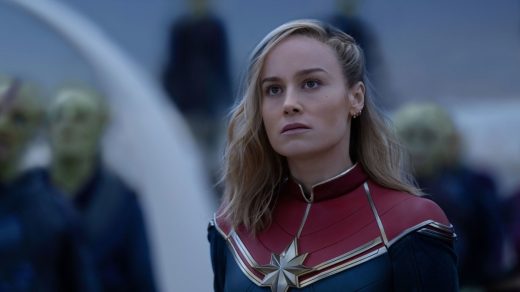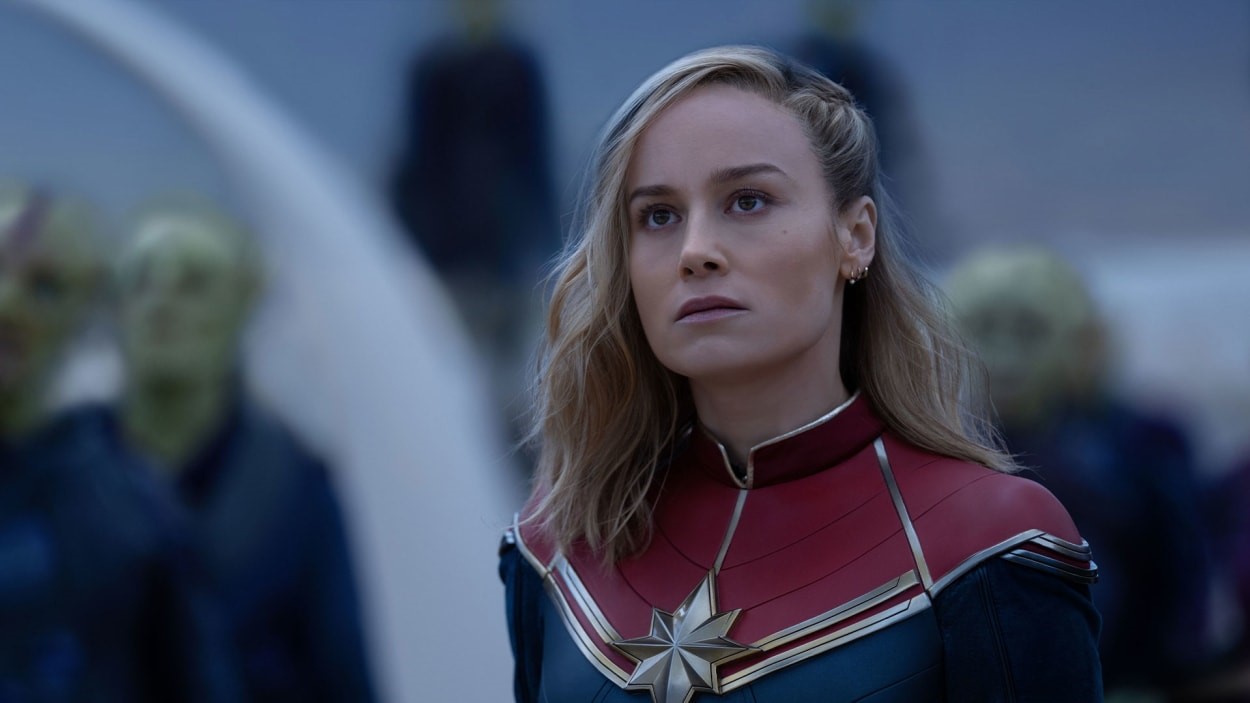Locking IP in a vault gave Disney its brand magic. Should it try that with Marvel?
Disney’s new film The Marvels turned in its second straight dismal box-office performance this weekend, taking in a mere $10.2 million. That was a 78% drop from its already-unimpressive opening-weekend haul of $46 million, and means The Marvels—which is a sequel to Captain Marvel, which earned more than $1 billion worldwide in 2019—now has the worst first and second weekends in the history of the Marvel Cinematic Universe.
Some of that is undoubtedly a function of the film itself, which got mixed reviews and a low grade of “B” in Cinemascore’s audience survey. But the movie’s failure is also symptomatic of deeper problems with the way Disney has handled the MCU in recent years.
Between 2008 (when the first MCU film, Iron Man, premiered) through 2019, when the so-called Infinity Saga wrapped up, Marvel released 23 movies (roughly two a year), almost all of which got good critical notices and did well—often exceptionally well—at the box office. Of the 24 movies released in that stretch, nine earned more than $1 billion at the global box office.
In the past three years alone, by contrast, Marvel has released 18 movies and streaming shows. And while it’s had its share of big successes—including the second Dr. Strange film, Wakanda Forever, and Guardians of the Galaxy, Vol. 3—that flood of new content has led to a much lower hit rate: Marvel has had only one movie since 2021 hit the billion-dollar mark, and two of the three films it’s put out this year—Ant Man and the Wasp: Quantumania and now The Marvels—have flopped. And new Marvel releases simply don’t generate the kind of buzz they once did.
The core problem for Disney is simple: it’s produced too much Marvel content. That’s happened for a couple of reasons: Disney wanted to cash in on the MCU’s popularity when it was at its peak, and Disney CEO Bob Iger’s decision to go all-in on streaming with Disney+ (which debuted in 2019, just as the Infinity Saga was ending) meant that it needed to generate more original content for the service. The resulting flood of Marvel movies and shows has devalued the brand and made each individual product seem less distinctive and compelling.
Just as important, producing so much content makes it hard to maintain a high level of quality, both in terms of subject matter (The Marvels, after all, features 2nd- or 3rd-tier heroes that many casual moviegoers have never heard of) and in terms of the actual productions themselves. It’s no coincidence, for instance, that the only three Marvel movies with Cinemascore ratings of “B” have been released in the last two years, or that those same three films—The Eternals, Quantumania, and The Marvels—got the worst Rotten Tomatoes scores in Marvel history.
All of this might have been OK if, as part of ramping up the number of shows and movies it was doing, Disney had been scaling back its production budgets. But there’s been no evidence of that—the budget for The Marvels was, depending on who you believe, somewhere between $220 million and $275 million. Disney is still spending lavishly, but getting much less than it did in the heyday of the Infinity Saga.
It’s not surprising that Disney fell into the overproduction trap: It’s in the business of monetizing intellectual property, and the MCU is one of the most valuable intellectual properties out there. But what’s interesting about Disney’s strategy with Marvel is that it’s exactly the opposite of what the company used to do with its classic animated films, like Snow White, Bambi, and Pinocchio. With only a couple of exceptions (Dumbo and Alice in Wonderland), Disney did not license those movies to TV networks. Instead, it hid them away in the vault, periodically rereleasing them in theaters during special engagements.
Disney wanted to maintain the mystique that surrounded those movies (and the mystique of the Disney brand itself), and didn’t want to risk devaluing them by making them easily accessible. In fact, even when home video came along, it took a lot to convince Disney that it made more economic sense to sell videocassettes of these films rather than to keep releasing them in theaters every so often. (They’re now available on-demand on its streaming service.)
Old Disney arguably went too far in the direction of zealously guarding its brand, but Disney today has done with Marvel precisely what the old hands were worried about: familiarity is breeding a kind of indifference among many viewers.
On top of that, Marvel itself can testify to the damage that overproduction can create. In the mid-1980s/early 1990s, there was a huge comic-book boom, which became a bubble. There were concrete reasons for the boom, most notably a spike in the quality and seriousness of comic-book writing and art in the 1980s, which got people to pay more attention to the genre, and a big influx of serious collectors, who bid up the prices of not just old but also even relatively new comics.
The result was a huge rise in demand, which the industry met by massively expanding the number of copies it printed of each title and massively expanding the number of new titles it was producing. That, in turn, predictably led to the market being oversaturated, which led to consumer exhaustion. In 1993, the comic-book market crashed, and in many ways never truly recovered.
It is, of course, hard not to try to milk successful a IP for all its worth as quickly as you can, particularly when you feel as if shareholders are breathing down your neck. And Disney has also been trying to feed the streaming maw, which seems to perpetually require new content. But in doing so, it’s eroding the sense of Marvel films as distinctive and special. In that sense, what Marvel’s troubles are telling us is that the old Disney approach was onto something: Even in an age of instant gratification, less is sometimes more.
(19)



